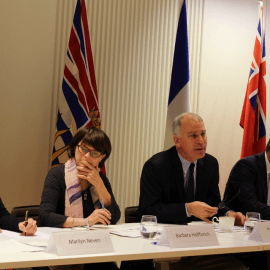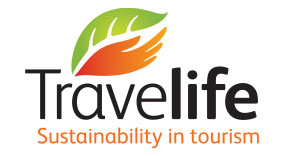We need a more visonary, more inclusive and more participatory approach to save the forests and its biodivesity.
First Step – Adjust the text below to suit you
If you have any personal opinions related to this topic and you’d like to add to the email, please add them to the letter below.
Dear Shri Jairam Ramesh,
We are International members of a campaign, Travel Operators for Tigers (TOFT), that support sustainable nature tourism in India, and as such would like to bring our views to bear on the recent Ecotourism Guidelines published by your Ministry.
The announcement of these Guidelines were very welcome, as we recognise the difficult challenges that are faced by India’s rapid and often unplanned development, and believed that this committee’s remit offered all those involved in conservation and nature tourism, a unique opportunity to go forward together. Here was a real chance to have visionary, sensible, practical and enforceable rules and regulations that could clean up the worst examples of poor nature tourism enterprise, encourage the very best and give us all a clear ‘Road Map’ as to how to build a better nature tourism industry that delivers both an exceptional wildlife service – comparable with other parts of the world in which we compete – but most importantly a powerful tool for conservation to save the Tigers and its forest domain.
Sadly, these Guidelines in their present form, do not offer any of these benefits. Instead they squandering this unique opportunity to learn from others and catch up with the visionary thinking and extraordinary successes from across the globe, but also those now being nurtured in India.
There are a number of aspects in the document which we can agree to but here are the issues that need serious redress:
• 2.1.8 – The proposed CESS Hotel turnover fee. There is no business in the world that could sustain such a ‘turnover tax’ alongside a host of others taxes. It’s completely nonsensical, exhibits no understanding of commercial reality and is wholly impractical to administer. Furthermore there is no accountable way for this to be administered to, or by, communities. These guidelines need to be encouraging community based enterprise and activity – not charity and dependency.(see points iii below)
• 2.2.4 – The percentage land use of PA’s for tourism, which are illogical and cause bizarre tourism management situations where little landscape exists for nature tourism, helping to exacerbate the overcrowding issues rather than solving it. While tourism is attracted to tigers, it is clear from the healthy populations in the most ‘tourism dense’ parks that far from being adversely affected by visitors, tigers seem to be flourishing with the added eyes, ears, media attention and accountability that tourism inevitably brings. These guidelines must plan for a huge increase in numbers of visitors – and spreading them thinner and further across India’s wilderness landscapes, not ‘bottling’ them up.
• 2.2.5 – The rule which states visitors cannot visit areas where relocated villagers used to live, will excludes almost every tourism zone open today. These relocated villagers desire for alternative livelihoods, employment opportunities, infrastructure development, the park fees and other state development revenues that accrue to relocated villagers, is the very reasons why these relocated villagers wanted to move out of core areas in the first place. Wildlife is the real beneficiaries of these moves, not tourism.
• 2.2.7 – The residential facilities in Parks are some of the best and most valuable assets in your parks today. Most of today’s well known conservationists fell in love with nature when staying in these resthouses and lodges. How can you destroy our children’s chance of experiencing nature in this way? Furthermore research, experience, and common sense shows that such facilities infact deter poaching, woodchopping and grazing – activities a hundred times more damaging than a few tourists in a small resthouse. Infact we would like to see more of these resthouses opened and the leases tended to reputed private operators to run more effectively than by Forest officers who are not trained or versed in effecting best practice wildlife tourism.
• 2.1.11 – The composition of Local Advisory Ccommittees (LACs). Here we need real ‘enforcers’, not more bureaucratic and unaccountable bodies on which sits a group of officials that have no interest, experience or understanding of tourism. These will never work effectively. We would ask that these guidelines give legal authority and a funding mechanism to a specific ‘Ecotourism Services Authority’ under the Ministry of Tourism, run by acknowledged professionals and experts in their field, and who set state rules and minimum standards, authorise EIA’s and audit providers to old and new operations in and around PA’s and Forest areas. All operations that use ‘nature tourism as their primary attraction’ should have a ‘Licence to operate’ from this authority (some initial fee and annual fee can be devised. This Licence can only be issued after achieving building standards, minimum standards of operation, including targets for local employment, lodge footprint, water and waste etc.
We also believe these Guidelines lack:
• i) Any vision as to the future of denuded buffer zones and corridors and how they could be revitalised through new forms of Community based conservancies, by public/private partnerships, by Carbon financing and private and NGO conservation funding mechanisms. Such mechanisms have being worked highly successfully in other parts of the world and India is being left behind in its vision and thinking.
• ii) Any mechanisms, like Government funding subsidies, tax breaks and capital incentives by which tourism entrepreneurs can become more involved in supporting conservation measures and helping in managing and protecting landscapes. In big cities your Government subsidises the building of extra hotels bedrooms – let’s use such a mechanism to encourage the reverse – smaller properties rather than larger ones, that leaves more land to nature on their properties, encourages reforestation projects with local villages and community ownership or shareholding in tourism properties and enterprises.
• iii) Any meaningful mechanisms by which local communities can become actively involved in ecotourism enterprises. This industry is one of the best and easiest to become a part of for communities bordering reserves, without complex skills sets, funding or knowledge, yet there is nothing here except ‘handouts’. The guidelines should be setting out mechanisms for community run campsites, children’s nature camps, trade cooperatives, small loan services to support key services, training, transport, homestays and arts and crafts that can be used, rented or bought by visitors.
• iv) A mechanism by which Field Directors and their staff, can carry out their jobs with their own resources, whilst tourists and Indian VIP Tourism – which is increasingly taking up their valuable time – can be taken care of within the responsibilities of a specially trained, park based, Tourism Officer, who role it is to coordinate the relationship and workings between park staff and tourism. A provision within park fees revenues could be a way forward to budget for this.
We all know the only way to go forward is by bringing together all parties, Government, communities and tourism – not trying to seperate or exclude them – ensuring more inclusion decision making and greater, more mutually beneficial partnerships to help in conserving India’s unique wilderness and wildlife.
We do not believe this to be an impossible task.
Second Step – Choose whom you would like to send this email
We recommend sending it to all…






